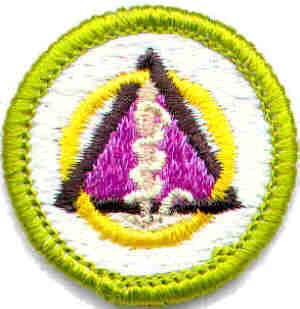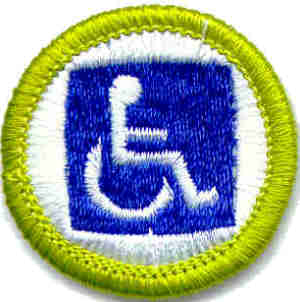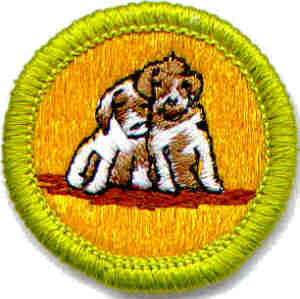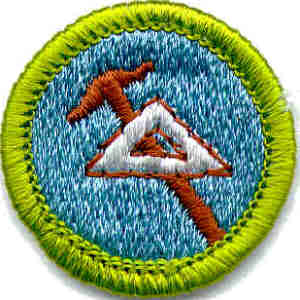
Dentistry
- Borrow X-ray photographs. Study the tooth
structure. Look for decay. Then:
- Use the X-ray as a guide to draw the lower molar. Label its parts and surfaces. Show surrounding structures such as bone and gum tissues.
- Show on your drawing where the nerves and blood vessels enter the tooth.
- Show on your drawing where bacterial plaque is most likely to be found.
- Do the following:
- Tell or write about dental decay and gum disease and what causes these. Tell what each of the following does: bacterial plaque, sugars, and acid.
- Show that you have learned how to teach others the proper use of a toothbrush, dental floss, and disclosing wafers to clean bacterial plaque from your teeth.
- Arrange for a visit with a dentist. Before going, ask if you can be given a dental examination and a plaque-control demonstration. Afterward, ask questions about things you want to know. Then write a report n what the dentist does in a checkup examination.
- Do TWO of the following:
- Name at least five instruments a dentist uses. On separate sheets of paper, draw them, label them, and explain how they are used.
- With the help of a dentist, prepare a dental plaster cast using a vibrator, mixing bowl, water measure, plaster measure, model plaster, spatula, and rubber mold.
- Keep a record of everything you eat for 3 days. Circle those that may provide sugars needed for the bacterial plaque to make acid. List snacks that should not be eaten to maintain the best oral health.
- Talk about all of the following. Then select one
and prepare a written report:
- How fluorides help prevent tooth decay. The ways fluorides can be provided to the teeth.
- First aid for saving a tooth that has been knocked out.
- The ways in which the mouth is related to the rest of the body. Things to be talked about might include chewing, saliva, enzymes, nutrition, and speech.
- Do TWO of the following:
- Make a model tooth of soap, clay, papier-mache, or wax and show proper toothbrushing and flossing to your troop or a school class using a large hand brush.
- Make a poster on prevention of dental disease. Show the need for good oral health.
- Collect at least five advertisements for different toothpastes. List the claims that are made for each. Tell about the accuracy of the advertisements.
- Write a feature story for your school newspaper on proper care of teeth and gums. Show it to your counselor for approval.
- Sketch the teeth of different kinds of animals. Show the difference between animals that eat meat and those that have vegetable diets. Tell how they make use of these differences for killing, tearing, shredding, and grinding.
- Do either (a) or (b):
- Study careers in dentistry. What are the different specialties of dentistry and what do they do? Report what you have learned.
- Prepare a four-part outline on jobs in dentistry. Under the headings "Dentist," "Dental Hygienist," "Dental Assistant," and "Dental Laboratory Technician" list the kinds of duties, high school or college needed, costs or education, length of training, and other information to describe these jobs.

Disabilities Awareness
- Visit an agency that works with the physically, sensory, or mentally handicapped. Collect publications about the agency's on behalf of its members. Learn what is being done through training, employment, and education of their members.
- Speak to a person with a disability or read an article or book about a person with a disability and report to your counselor what you learned about that person's experiences in dealing with a disability.
- Spend 15 hours within a 3-month period in ONE of
the following ways:
- Visit a special Cub Scout pack or Boy Scout troop that works with Scouts with disabilities. Learn about their activities, assist the leaders, and work with the members of the group.
- Enlist the help of your unit leader and the parents or guardians of someone with a disabling condition and invite the disabled individual to join your troop, team, or post. Help him or her become a participating member.
- Locate and study literature about the
accessibility or nonaccessibility of public or
private places to the disabled individuals.
Observe and discuss with your counselor the
accessibility or nonaccessibility for disabled
people in the following:
- Five places with good accessibility,
- Five places with poor accessibility,
- Your school, church, synagogue, or mosque
- Your Scout camping site.
- Display in a public place the material you have collected for the other requirements of this merit badge so that others can be made more aware of citizens with disabilities.
- Make a commitment to your merit badge counselor as to what you will do in the future for those people with disabling conditions. Discuss how your awareness has changed as a result of what you learned.

Dog Care
- Tell some of the characteristics of 10 breeds of dogs, OR give a short history of one.
- Point out on a dog (or on a sketch) at least 10 parts. Give the correct name of each.
- Present a report signed by a parent or guardian describing the care you have given your dog for 2 months. Include these items: feeding schedule, food used, housing, exercising, grooming, and bathing. Tell what has been done to keep the dog alert and healthy.
- Present a written report showing about how much it costs to keep your dog for 2 months.
- Explain the right way to obedience train. Show with your dog any three of these commends: "Come," "Sit," "Down," "Heel," "Stay," "Take it," Drop it," "Get it."
- Do at least TWO of the following:
- Describe what should be done to remove fleas, ticks, and lice from your dog.
- Describe the symptoms of the following: distemper, rabies, mange, ringworm. Explain what you would do if your dog showed these.
- Describe the proper treatment for sore ear, sore eye, fits, removing something swallowed by a dog, removing something stuck in its throat.
- Explain first aid for a dog bite. List the things as needed in every dog owner's first aid kit.
- Explain precautions to take in handling a hurt dog. Show how to put on an emergency safety muzzle. Explain how to treat wounds. Show how to put on a simple dressing and bandage to the foot, body, or head. Explain what to do if a dog is hit by a car.
- Tell the dangers of home treatment of a serious ailment. Report on a visit to a veterinary hospital, or report on a visit to an animal shelter.
- Know the laws and ordinances involving dogs in force in your town.

Drafting
- Format four sheets of drawing paper (or two
sheets of paper if you are completing requirement
3) with proper borders and title blocks for your
projects.
- Make a rough sketch of your project drawings to determine the correct size of paper to format.
- Using single-stroke vertical or slant Gothic lettering, fill in all important information in the title block sections of the formatted paper.
Complete requirement 2 or 3 for your drawing projects.
- Prepare two of the following pencil drawings for
reproduction, using two of the formatted sheets
of paper and being sure to fill in the title
block information.
- Architectural: Make a rough sketch of a room. From it, maker a finished scale floor plan. Using conventional symbols, show all openings, equipment, lights, and safety devices. Use an architectural scale size.
- Mechanical: Make a scale drawing of some piece of craft work or interesting object. Use the orthographic projection technique to show at least three views. Use dimension lines to show the actual size.
- Electrical: Draw a simple schematic of a radio or electronic circuit. Properly print a bill of materials of the major electronic parts of the radio or circuit. Use standard drawing symbols for the electronic components.
- Using a CAD (computer-aided drafting) system, prepare and plot one of the drawings in requirements 2a, 2b, or 2c. Create the format (border and title block) on the computer before starting the drawing.
- Using a formatted sheet of paper, prepare an isometric drawing of something not drawn in requirement 2 or 3. On the drawing, list which instruments you used.
- Lettering: Using single-stroke vertical or slant Gothic lettering, describe in forty words or less why CAD is used in a particular industry (aerospace, electronics, architectural, or other). Use the 8+-by-11-inch formatted sheet.
- Describe the three most common methods of reproducing pencil drawings. Describe one method of reproducing a computer drawing. Make copies of one of your drawings using one of these methods.